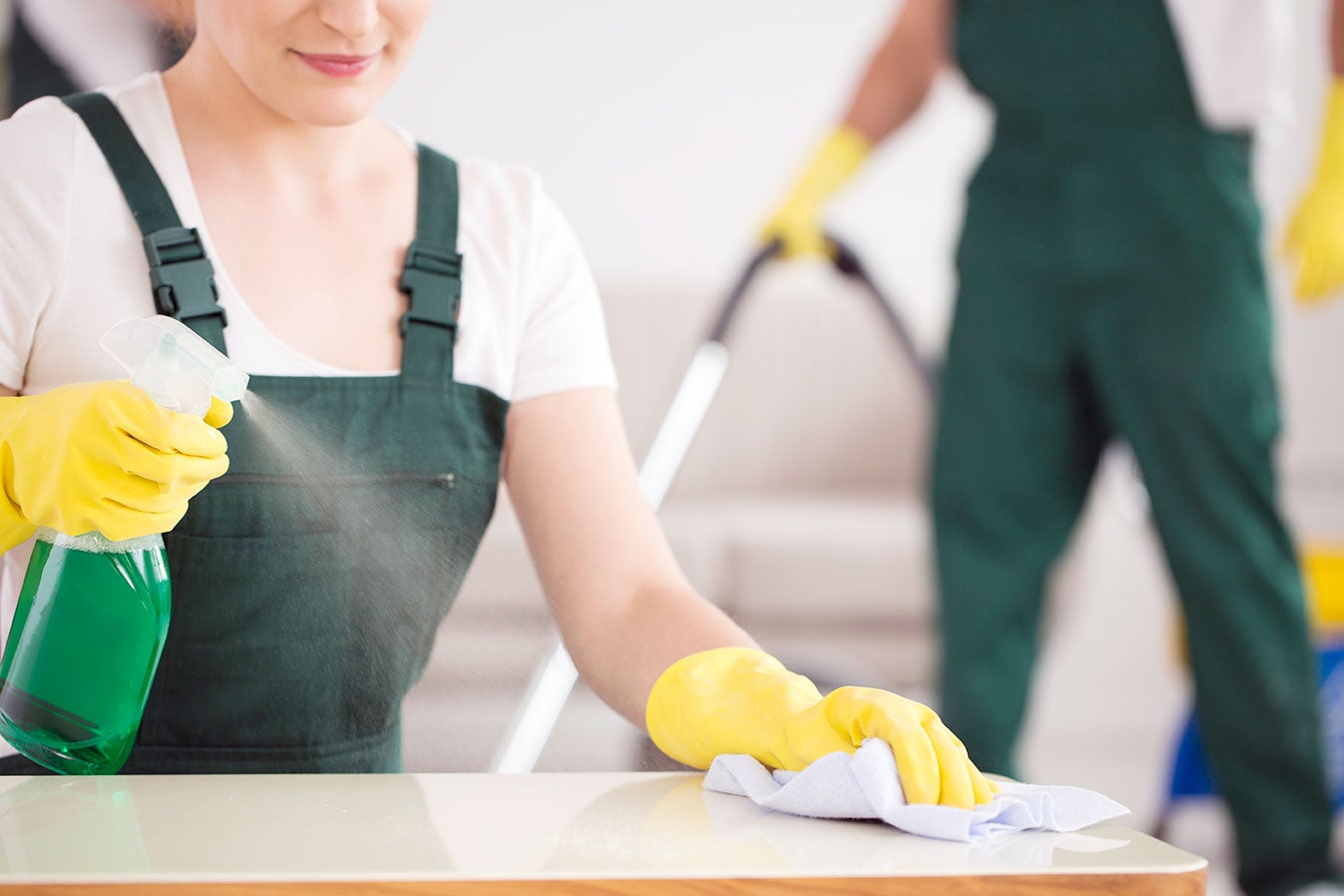Building a Sustainable Cleaning Operation Part II: The Processes to Follow

In my previous blog, I covered the products to use in a sustainable cleaning practice. Having the right products is important, but it is also important to use products in a sustainable way. In some cases, the right process will help you avoid using cleaning products at all. In this blog, I will share some processes that help reduce waste so you can clean your facility in a more sustainable way.
The LEED Green Cleaning Policy: A Useful Guide for the Best Practices
The Leadership in Energy and Environmental Design (LEED) certification for green buildings is one of the premier certifications for sustainable buildings. LEED’s experience in operating buildings more sustainably helps companies save energy and money.
LEED certified buildings must have a green cleaning policy that focuses on reducing energy use and waste, using greener products, and using practices that improve the health and well-being of the facility.
Even if you are not contracted with a building that is LEED certified, you can benefit from implementing green cleaning practices. By following the guidelines set forth by LEED, you can create your own Green Cleaning Policy. Simply download their template and use it as a model for your own policy.
5 Areas to Focus On
Based on the guidance in the LEED green cleaning policy, we recommend focusing on these 5 areas to make sustainable changes in your cleaning operation
- Track your product inventory and usage. Keep track of how much product is used. This practice helps with budget planning and allows you to identify any waste. For example, when using a concentrate, make sure you only dilute what is needed for that day, since most concentrates expire within 24 hours of diluting. Also, keep track of product expiration dates to avoid unnecessary disposal of unused products. If you must dispose of an expired product, consider purchasing a smaller quantity of the product next time.
- Where possible, use practices that can help reduce your cleaning tasks. For example, place sticky floor mats at building entrances. This can significantly reduce the amount of dirt and debris tracked into the building, which can reduce the need for frequent floor cleaning. Additionally, encourage building occupants to wipe down their desks and common areas to help prevent the buildup of dried grime, reducing the need for harsh cleaning chemicals. In some cases, using disinfecting wipes instead of microfiber cloths can be beneficial, since it reduces laundering necessary to maintain microfiber, which can save water and energy use in the facility.
- Develop a plan and use checklists. Get to know the surfaces in your facility and how frequently spaces are used. This will enable you to tailor your cleaning plan to meet the specific needs of each space. Identify tasks and spaces that need daily cleaning and disinfection, versus those that only need to be cleaned weekly, quarterly, or as needed. Use checklists to keep track of which areas have been cleaned and when – this can help reduce unnecessary cleaning in spaces that have not been occupied.
- Reduce energy consumption. When possible, use cold water to prepare dilutions or do laundry. Change vacuum filters frequently so they run more efficiently. Use the minimum amount of cleaning and disinfecting product necessary. This may mean selecting disinfectants with the shortest contact time possible. For further guidance on selecting sustainable products, read my previous blog on the subject.
- Invest in training for custodial workers. Sustainability isn’t only about environmental wellness, but also about ensuring the well-being of workers. Training can help enhance your custodial operation improve compliance in processes, help reduce your employee turnover, and improve employee satisfaction. In the end, having more efficient workers who remain in their positions can lead to long-term cost savings for your business. Consider starting with the Clorox HealthyClean training platform for your employees.
Good for the Environment and for Your Business
In a recent survey, facilities said they were willing to pay contractors more for sustainable cleaning practices.1 A separate survey found that when choosing between two contractors, most facility executives would choose the one that offered green cleaning.2 By incorporating the 5 practices presented in this blog, you can establish a sustainability-focused value-added service to your cleaning business that can help you win more bids and benefit your bottom line.
References
1. https://www.cleanlink.com/news/article/Survey-Outlines-BSCFacility-Sustainability-and-ESG-Goals–29192
2. https://www.cleanlink.com/cp/article/Facility-Executives-See-Value-Sustainability-In-Green-Cleaning–21747






